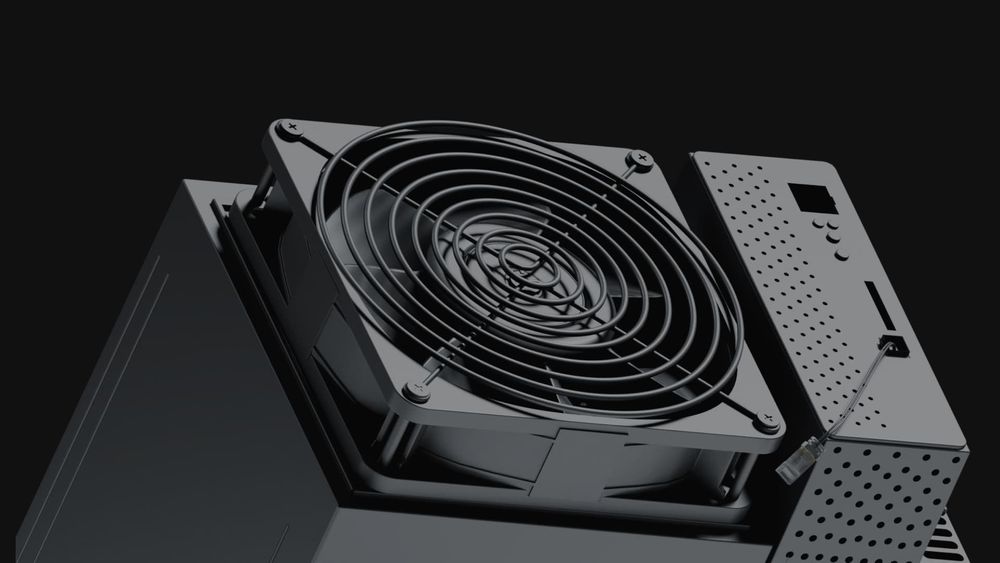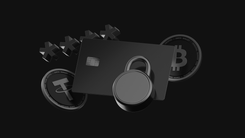The Future of Cryptocurrency Mining

A long time ago, in a faraway galaxy … specifically at the dawn of the cryptocurrency era in 2009, a Norwegian student, Kristoffer Koch, made an unusual investment in something little-understood at that time: a cryptocurrency called Bitcoin. The student was cautious and ended up spending only $ 24. And then... he simply forgot about it. Several years later, Kristoffer remembered his investment. He was thrilled to discover that the market value of his cryptocurrency investment had skyrocketed to a fantastic $ 885 000! According to legend, the investor bought a cozy apartment in Oslo with the invested money. Whether this is true or not remains unknown, but this story accurately captures the essence of cryptocurrency as an investment tool.
But when it comes to earning in this field, aside from trading, as in the lucky Norwegian student’s case, there is another way – mining.
The word ‘mining’ literally means ‘extraction of minerals.’ The term sounds romantic, but crypto mining isn’t like the traditional extraction of oil, gas, or gold ore. However, cryptocurrency is sometimes referred to as digital gold — one of the most valuable materials in the world — so certain parallels are useful.
Mining is quite a complex system. It involves computing a limited amount of cryptographic code by trying various numerical combinations. During this process, a new crypto block is generated. It contains information about coin transfers between users over a specific period, a reference to the previous block, and a hash value. This information is the key to successfully generating a block in the blockchain network. Once the new block is verified and validated, it becomes part of the blockchain, and miners are rewarded with cryptocurrencies.
The mining process is quite labor-intensive: it requires high-performance hardware, as well as a significant amount of electricity which may cost a lot. Additionally, the process is complicated by the volatility of the cryptocurrency market. You should use an online calculator to assess the profitability of your chosen coin, too.
So, this process isn’t so straightforward to dive into and is very unpredictable. That’s why many miners are left wondering ‘what is the future of cryptocurrency?’
Is Starting Mining in the Future Worth It?
The short answer is yes.
Today, financial and economic authorities agree that countries worldwide should use their competitive advantages in crypto mining. This is especially crucial for countries with inexpensive electricity and a cool climate, which help reduce mining costs and generally promote its development.
Will Mining Be Relevant in the Near Future?
You shouldn’t waste your time figuring out what will mining be in the future since it’s better to start today. The mining bills in many crypto-developed countries are expected to pass. So it's worth starting to mine now. Both miners and the budget will benefit. However, it's important to wait for the legislative framework — only then can the legal status of mining be established, along with data on its profitability. Most importantly, it will be possible to build an economic model of mining as a production activity, which will be convenient for companies and businesses overall.
The Fate of Mining in the Near Future
The question of ‘How to make money with crypto?’ is becoming increasingly relevant with the anticipated new realities.
From a technical standpoint, no revolutionary changes should be expected. Once the mining law is passed, you will continue mining crypto using the most efficient equipment — ASIC miners and GPUs. The nuances are important: ASICs represent a higher level, suitable for mining BTC, while GPUs are commonly considered for more casual, ‘at-home’ crypto mining.
ASICs are powerful computers specifically built for crypto mining. However, they have one particular drawback: the released models become outdated relatively quickly, which directly impacts their efficiency and, as a result, the profitability of mining. If you’re eager to get a stable income, it’s essential to find the golden mean in the triangle of ‘Hashrate – Power Consumption – Price.’
On the one hand, new, more powerful devices are constantly being developed and released, capable of generating good income from mining. However, their costs and electricity expenses are also rising. For example, the new Bitmain Antminer S19 Pro+ Hyd, with a hashrate of 198 TH/s, costs around $ 2 000 as of autumn 2024. One of the most optimal options for solo mining is a mining hotel, where all production conditions are always met.
On the other hand, you can mine crypto at home using GPUs. However, they don't have the same power as ASICs, but the entry cost into the mining industry with this device is significantly lower. This method is also a good option for mining altcoins. Efficiency depends on the algorithm and each specific coin’s mining difficulty. The hashrate is not as high, so expenses and profits are lower. It’s also worth mentioning that the cost of entry tickets in mining solo continues to rise, as does the competition.
If you’re wondering what will cryptocurrency mining in the near future looks like, then you should realize that it’s likely to be solo or in a pool. Solo mining is more associated with GPUs — it's a more ‘craft’ approach. In contrast, mining pools, especially the larger players, likely represent the future of cryptocurrency production. In pools, everything is higher: both hashrate and costs. And, of course, profits as well.
What will Bitcoin’s Halving Bring to Mining?
Let's dive into the world of halving and look through the experts’ predictions about it. It's believed to be a brilliant idea from the legendary Satoshi Nakamoto to prevent Bitcoin inflation. As you may know, the total supply of Bitcoin is capped at 21 million coins. By early 2024, miners had already mined around 92% of all Bitcoins. In April 2024, the latest halving occurred, meaning the planned reduction of newly issued Bitcoins. This event occurs every four years and has historically sparked a bullish market. At least, that's been the pattern so far.
Bitcoin started with a price of less than a cent back in 2009, but by 2013, users already needed $ 266 to buy the first cryptocurrency. Since then, this trend has repeated itself time and time again. At the beginning of this year, Bitcoin’s market price hovered around $ 25 000. By the end of the year, its exchange rate passed the $ 40 000 mark and continues to grow successfully.
During the 2024 halving, the reward for generating a block was reduced to 3.125 bitcoins. This cut the first cryptocurrency's annual inflation rate from 1.7% to 0.8%.
Now, the big question: what’s next for Bitcoin? In the two years leading up to the 2012 halving, Bitcoin's price surged by an incredible 30 000%. Before the 2016 halving, it grew by 786%, and in 2020, the increase was 712%. If these trends from the last two halvings continues, by 2025 we could see Bitcoin reach a mind-blowing price of $ 220 000!
Still, it’s important to keep a level head — no market moves in a straight line. It’s always a cycle of ups and downs, and it's possible that Bitcoin may not reach such astronomical heights during the next period. More likely, it will continue to grow but with less volatility in its price.
Cloud Mining Prospects
Cloud mining is essentially outsourced mining. Miners don’t invest in their own equipment or deal with operational costs. Instead, they rent computing power from a data center and earn a share of the coins mined. It’s also a safer scheme, though profits can be lower compared to solo mining or joining a mining pool. The key here is choosing the right mining company — reliability must go hand in hand with profitability.
It seems that cloud mining, like other types of mining, is poised for further development in the near future. The key factor will be the long-awaited passage of a mining law in countries with low electricity rates. Legal clarity and transparency around mining will empower miners with rights and could serve as a catalyst for the growth of remote cryptocurrency production as well.
Strategy: ‘Investing in cryptocurrency and mining in the near future’*
Let’s start with mining. Overall, crypto mining is profitable. It was profitable in the past, and it will remain profitable next year as well. Moreover, the mining law will bring much-needed regulation to the market. The advantages in many countries, like low electricity costs, only fuel further mining growth. Times of crisis are times of opportunity.
When it comes to the investment side of cryptocurrency, the most reasonable strategy is HODL, or ’Hold on for dear life’ in crypto slang — essentially ‘buy crypto and never sell it’. It’s likely that the current ‘bullish’ rate trend in Bitcoin and other altcoins will experience fluctuations, as volatility is a given in this space. However, historically, investing in Bitcoin before halving has proven to be highly profitable. Even if a bear market arrives, crypto investments still look promising in the long run and are likely to bring profit. Plus, it seems the governments have finally committed to developing cryptocurrency, including mining.
*This material is published for informational purposes only and does not constitute financial advice.
F.A.Q.
How do I mine BTC?
First, it's important to choose a cryptocurrency for mining and set up a wallet. Today and in the near future, profitable BTC mining is more likely to be possible with powerful ASIC miners or by joining a mining pool.
How do I start mining?
The first and most crucial step in the crypto world is to choose the coin to mine and the mining method.
How do I start mining tokens?
First, you should analyze the cryptocurrency market, select a token for mining, and assess its profitability. Next, take a closer look at the efficient mining hardware and the mining method.
What are the risks of mining?
Several key risks in crypto mining include coin price drops, equipment obsolescence, electricity rates, tax risks, and fraud.





